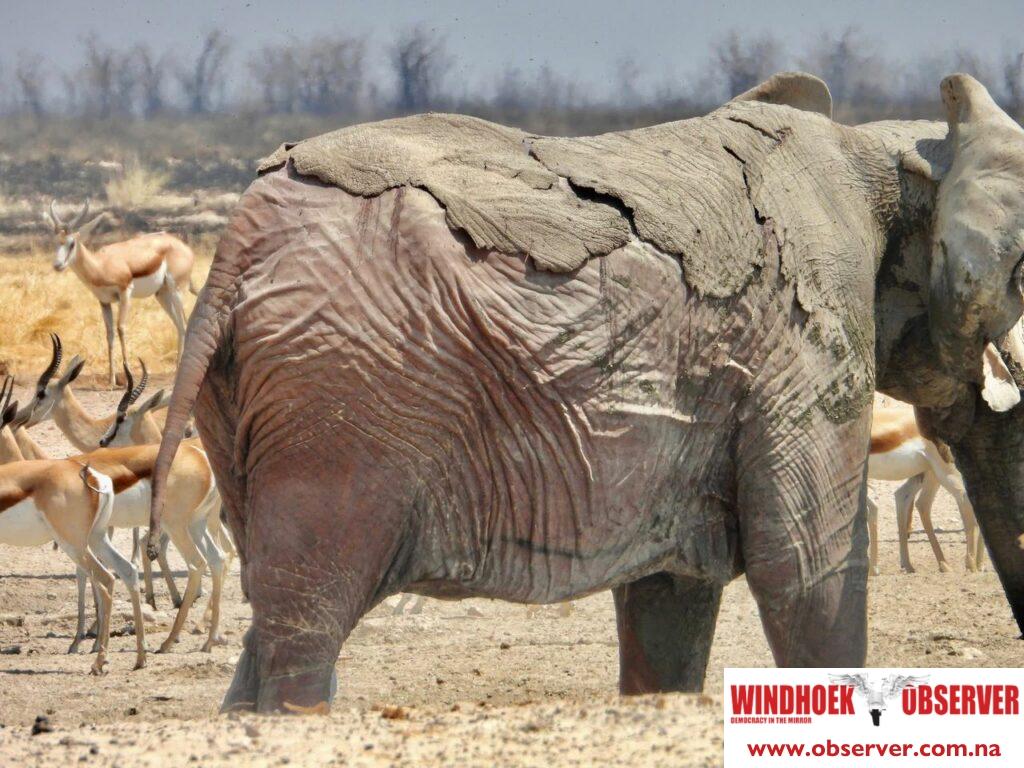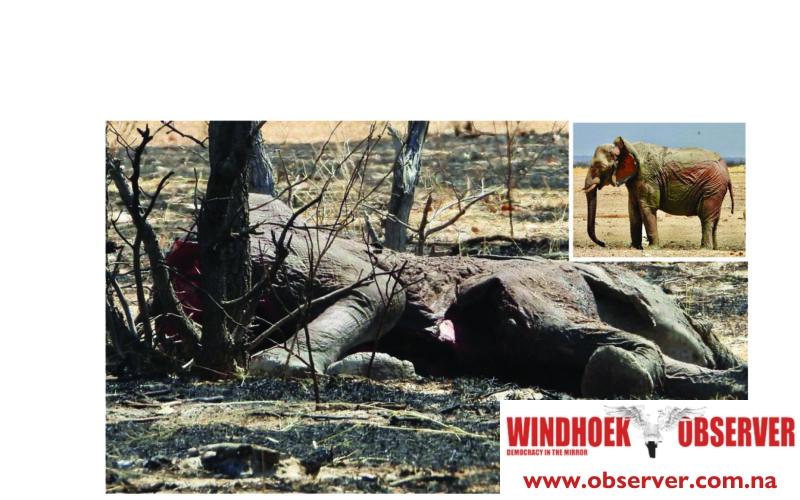Allexer Namundjembo
The Ministry of Environment, Forestry and Tourism (MEFT) says veterinarians are investigating the cause of death of an elephant recently found in Etosha National Park.
The ministry confirmed that the elephant was discovered during monitoring operations following wildfires that have destroyed more than 775 163 hectares inside the park since 22 September.
An additional 171 098 hectares of grazing land and communal areas outside the park have also burnt.
Farmers from Omutambo-gomawe near the park said they suspected livestock loss.
“An elephant was recently spotted, and veterinarians are still determining the cause of its death,” said the ministry’s spokesperson, Ndeshipanda Hamunyela.

Hamunyela said monitoring teams, which include a helicopter, a fixed-wing aircraft, and two Namibia Defence Force helicopters, will continue to survey fire-affected areas and track animal casualties.
Hamunyela said monitoring teams using a helicopter, a fixed-wing aircraft, and two Namibia Defence Force helicopters are continuing to survey affected areas.
Confirmed deaths so far include nine antelopes, while one pangolin was injured.
“The ministry is not aware of all the incidents currently circulating on social media. We therefore request that if anyone comes across an animal carcass or an injured animal, they should kindly inform the ministry and provide the location,” she said.
On Tuesday, tourists and conservationists critiqued the response.
Koos Reyneke, a regular visitor to the park, wrote online after travelling nearly 200 kilometres from the west gate to Okaukuejo that the continuous decline in management over the five and a half years of his visits had left him deeply disappointed and angry.
“I noticed the death and suffering of animals placed under the care and management of humans, getting paid but not looking after the animals suffering under their supposed care. Simple, cost-effective double fire strips could easily have been scraped by graders fifty or a hundred yards apart, and the grass between the graded strips burnt in time, sufficient to prevent raging wind-driven fires,” said Reyneke.
The true impact, according to Sean Naude of the Namibian Marshall Rangers, is on smaller creatures.
“While many focus on large animals for statistical purposes, the impact on smaller creatures is far more devastating. Every creature – lizards, tortoises, snakes, rabbits, insects and nesting birds – has been affected. The reality of this fire is completely devastating and concerning as to how much effort, funds and resources are being put into preparing for disaster situations. Serious action needs to be taken to ensure such things never repeat themselves in our country,” he said.
Environment and tourism minister Indileni Daniel confirmed that 34% of Etosha has been burnt.
The most affected areas include Dolomite North and South, Okatutu, Renostervlei, Jackalswater, Halali and the area between Olifantbad and Halali.
Omutambo-gomawe, Okambango, Okerine, Onghunya, Osagalwa, Omalika, and Ovenduka are among the villages affected.
The Ministry of Defence and Veterans Affairs has deployed 49 soldiers, with 500 more expected to join, along with helicopters and a water tanker.
Political analyst Ndumba Kamwanyah said government delays worsened the disaster.
“Our wildlife has suffered, many injured or killed, and the rest under extreme stress. For four days after the fire started, there was no sign of government support. This is unacceptable. There must be accountability for the slow response,” he said.




